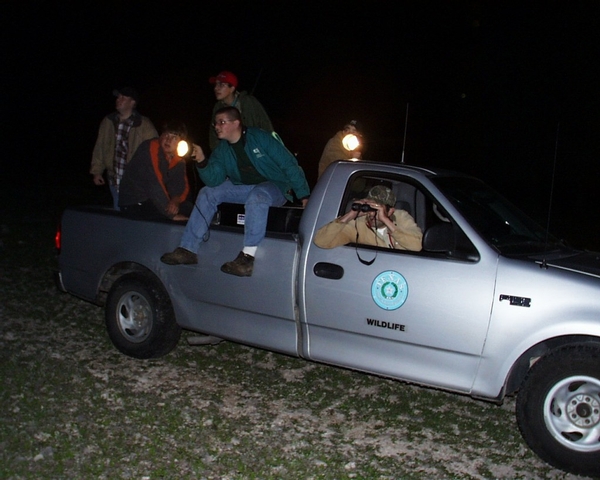
Tips to Aid Spotlight Surveys

For those choosing spotlight surveys this year, consider the following tips:
- Spotlight surveys have limited application on small tracts of land or where dense vegetation greatly reduces visibility.
- Spotlight surveys are not designed to observe a total deer population, rather to sample a representative portion of habitat and the number of deer found there.
- Multiple counts (three is recommended) are required on the same route for reliable information.
- Select all-weather roads that go through a variety of habitat types. Avoid roads that frequently wash out or become impassable following heavy rain.
- Route should sample different habitat types in proportion to number of acres they represent on the property. Avoid roads by feeders or food plots where deer may be concentrated.
- On large tracts, more than one route may be required to adequately sample a ranch.
- Make a map of the route for future reference.
- Visibility readings (distance from the vehicle you could actually see a deer in a straight line perpendicular to the truck) should be taken at 1/10 mile intervals if the total length of the line is less than 12 miles. If the length is 12 miles or greater, visibility readings can be taken at 2/10 mile intervals.
- Visibility readings are needed only on the first survey. Multiple surveys along the exact route do not require retaking visibility readings.
- Visibility estimates may be used for several years unless significant changes in vegetation have occurred along the route.
- Spotlight surveys should be conducted during the months of August, September, and early October.
- Do not conduct surveys during rain, high wind or following significant disturbance along the route during the day of the count.
- Begin all counts one hour after official sunset.
- In thicker areas, drive 5-8 mph. In more open areas, speed may be increased to 10-15 mph. Stop only to identify deer.
- Identify all deer encountered as bucks, does, fawns, or unidentified. Unless all deer observed in a group can be identified by sex and age-class, record ALL deer as unidentified. Recording only bucks from a group will bias data and reflect a better sex ratio than may be present.
- A good pair of binoculars is imperative during a survey to correctly identify animals.
- Deer observed over 250 yards from the vehicle should not be recorded or counted.
- Pickup trucks with two spotlights and two observers standing or sitting in the bed are recommended. Passenger cars and SUVs offer limited visibility and are often too low to the ground.
All photo and content herein is copyrighted property of Spring Creek Outdoors, LLC and may not be copied/reproduced or otherwise used in any way without express written permission from Spring Creek Outdoors, LLC. All rights reserved.
Posted in: Deer Management, Surveys
